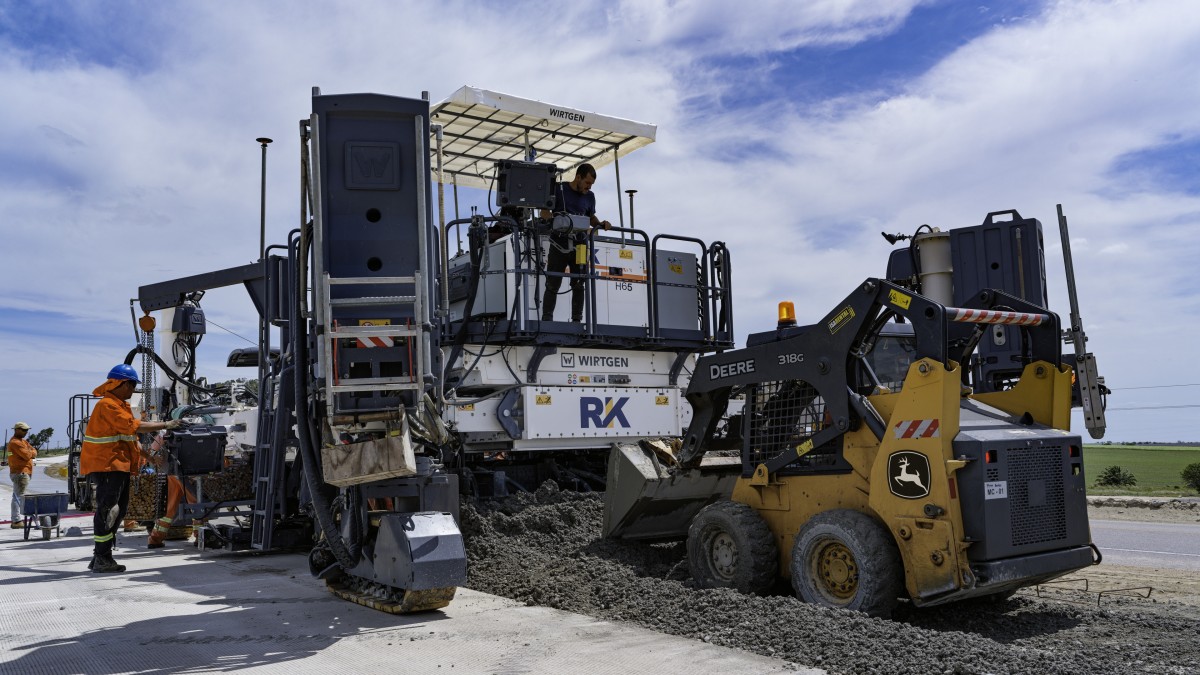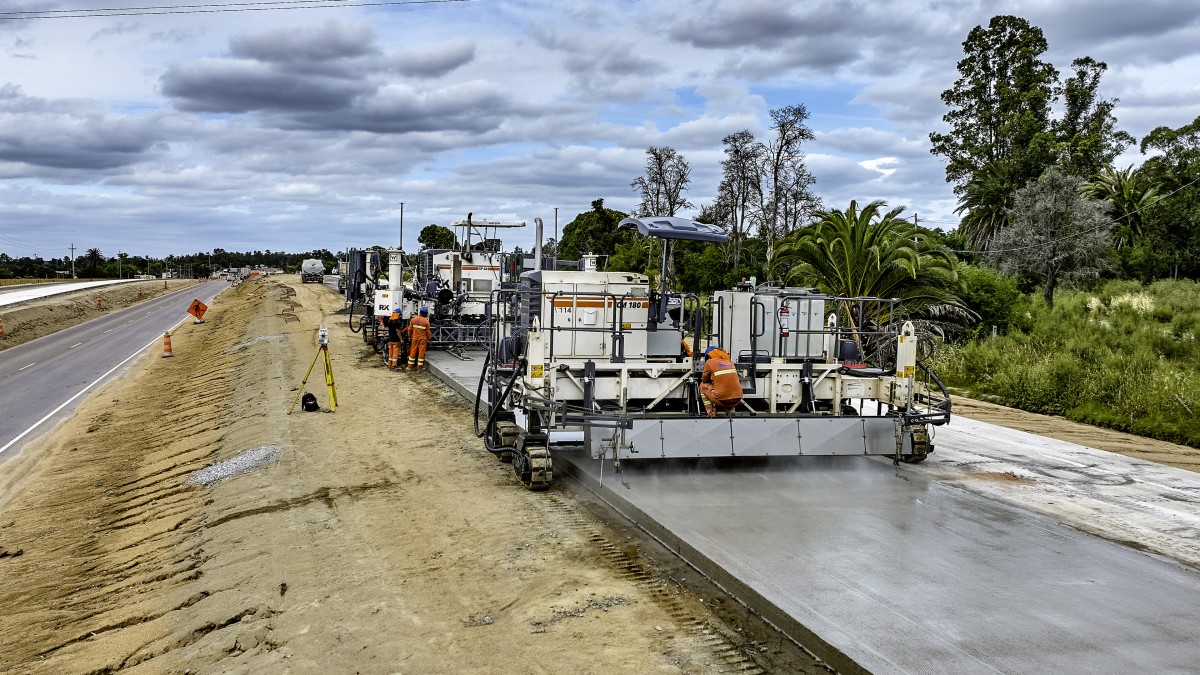Home \ International \ Wirtgen: Widening of the Ruta 5 highway from Montevideo to the Brazilian Border
Wirtgen: Widening of the Ruta 5 highway from Montevideo to the Brazilian Border
04/11/2024
Pubblicato da Ettore Zanatta
Efficient concrete paving solutions from Wirtgen ensure the success of a road construction project in Uruguay.
One of the five most important Uruguayan national highways connecting to the heartland begins in the capital city, Montevideo. The ‘Five Fingers’ link the larger cities to the capital and are the most important arterial routes in the country. One of these is the Ruta 5, which heads north to the city of Rivera on the border with Brazil.
Up to now, there has only been one lane in each direction. but now, the northbound and southbound lanes of a 75 km section of the highway are being doubled to two lanes. The project involves the construction of the new traffic lanes and rehabilitation of the existing road surface. Four contractors were commissioned to carry out the construction project. The equipment deployed for the project included three slipform pavers SP 64 and two texture curing machines TCM 180 from Wirtgen and a JD 318G skid steer loader from John Deere.
When constructing concrete roadways, the reinforcement in the form of dowel baskets or steel rebar mats is frequently pre-placed ahead of the machine. Considering the terrain, this would, however, have been extremely time-consuming. The pre-placement process considerably limits the space available on the construction site and hinders the manoeuvring of construction vehicles on the site. When the reinforcement is in place, this means that the concrete supplied for the paving work can only be delivered from the side. Here, the use of the integrated dowel bar inserter (DBI) on the SP 64 brings numerous advantages. Both the dowel bars and the longitudinal joint tie bars are placed automatically across the entire paving width. This increases process reliability, as the dowels and tie bars can always be inserted at exactly the right locations. The concrete can be offloaded and evenly spread immediately in front of the machine. Construction vehicles such as the tipper trucks supplying the concrete have more space to manoeuvre. ‘With this machine, we can achieve a much higher overall level of productivity than with our earlier method of paving the concrete with vibrating screeds.’, says Sebastián Trujillo, machine operator from R&K – Berkes, summing up the advantages of the SP 64.
Traditionally, slipform pavers are controlled by mechanical scanning of previously installed stringlines. In contrast to this, when using a virtual stringline for 3D control, the height and positioning data for the line to be paved are contained in a digital terrain model. Two prisms are typically installed on the slipform paver, both of which have line-of-sight contact with a total station and reflect its laser beam. The total station determines the position of the prism in three dimensions and transmits it to the machine’s control system. In combination with the inclination sensors on the machine, this enables extremely precise control of the paver’s height and position.
In comparison to control by a physical stringline, a virtual stringline offers a number of benefits: The paving crew on the Ruta 5 highway was able to move freely around the construction site, and there was more room to manoeuvre the machines and construction vehicles. At the same time, the drivers of the tipper trucks delivering the concrete didn’t need to think about a stringline being in the way. They were able to drive right up to the slipform paver to offload the concrete anywhere on the site. The time consuming detours to avoid the stringline when leaving the site were also no longer necessary. Apart from the better site logistics, the project managers also made a special mention of the outstanding IRI they were able to achieve with the system. The International Roughness Index (IRI) describes the evenness of the road surface.

Ultime notizie di Wirtgen Macchine

Earthmoving Machinery
21/11/2024
Kleemann: New compact crusher used for recycling
Impact crusher MOBIREX MR 100i NEO impresses during operatio...
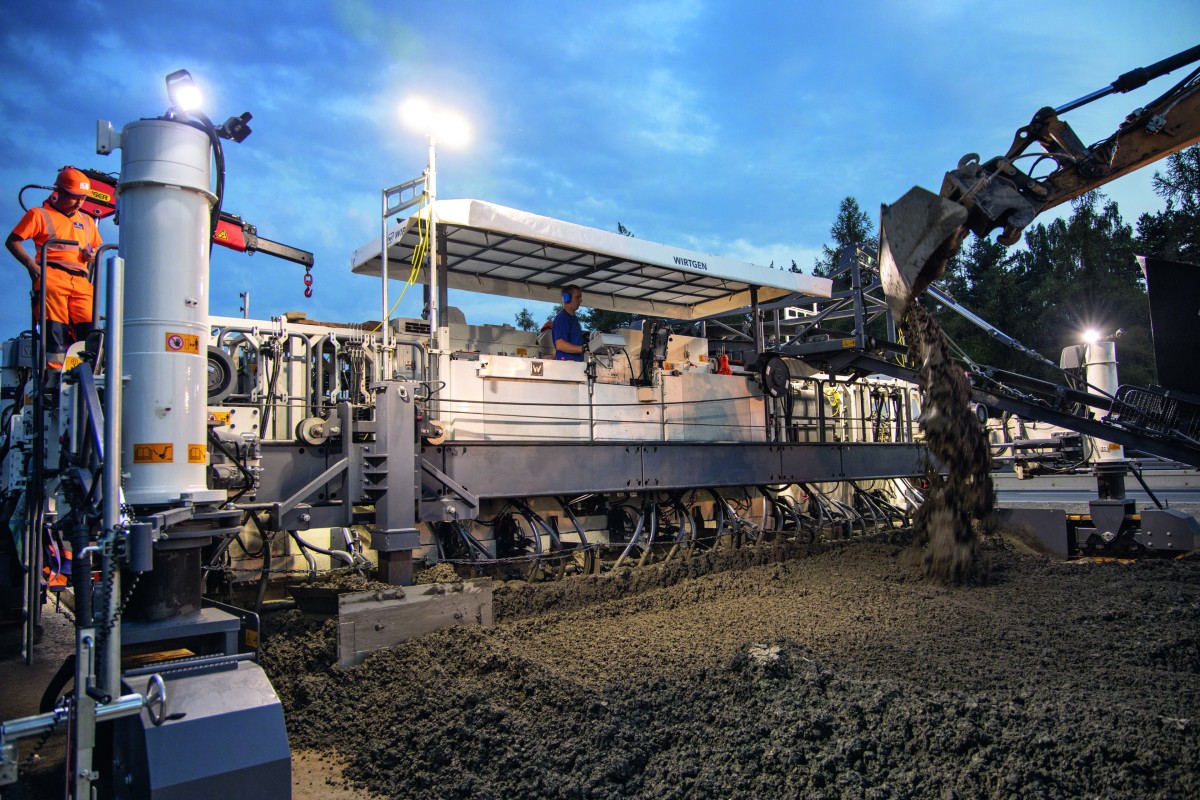
Road Machinery
31/10/2024
Wirtgen: Concrete paving with inset slipform pavers
Wirtgen has been offering machines for inset slipform paving...
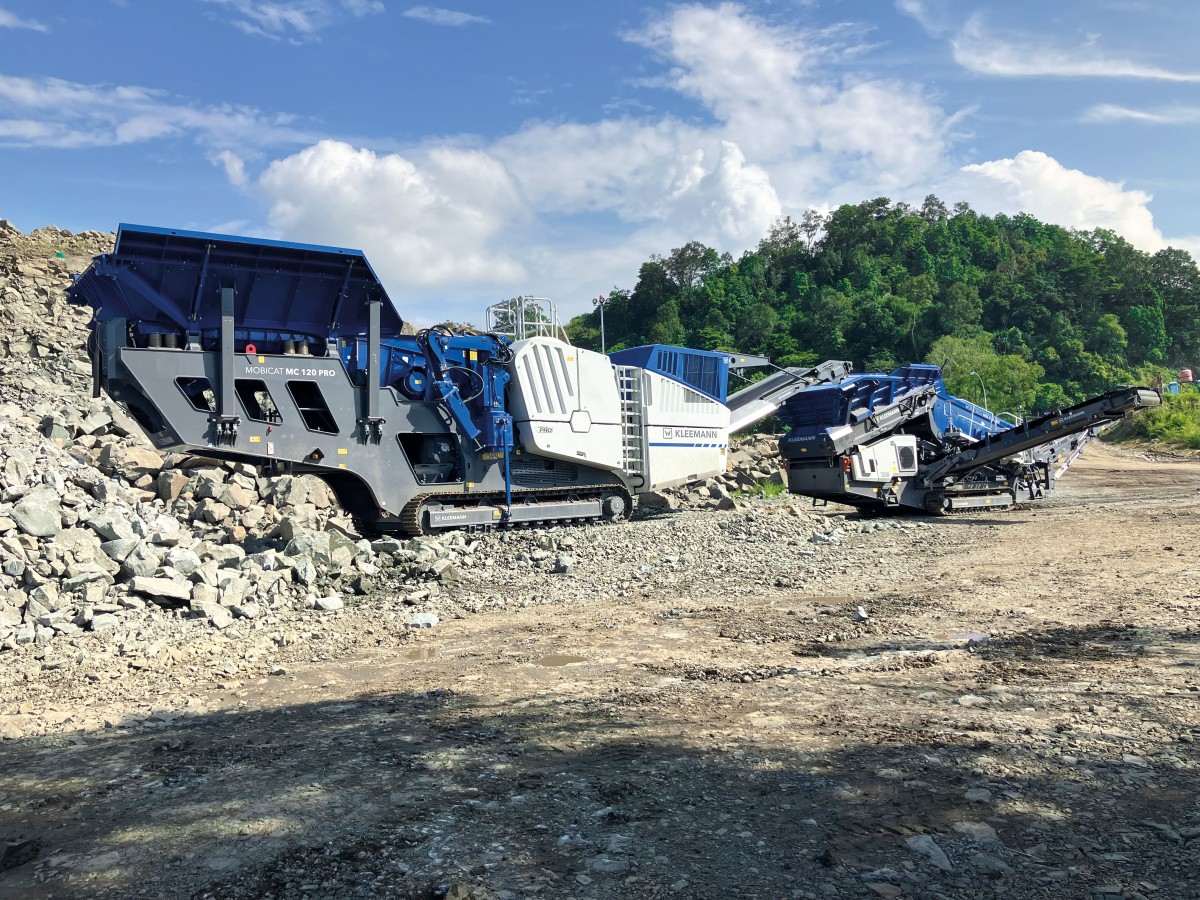
Earthmoving Machinery
28/10/2024
Kleemann: Andesite processing in Indonesia
A MOBICAT MC 120 PRO and a MOBISCREEN MSS 802 EVO are deploy...
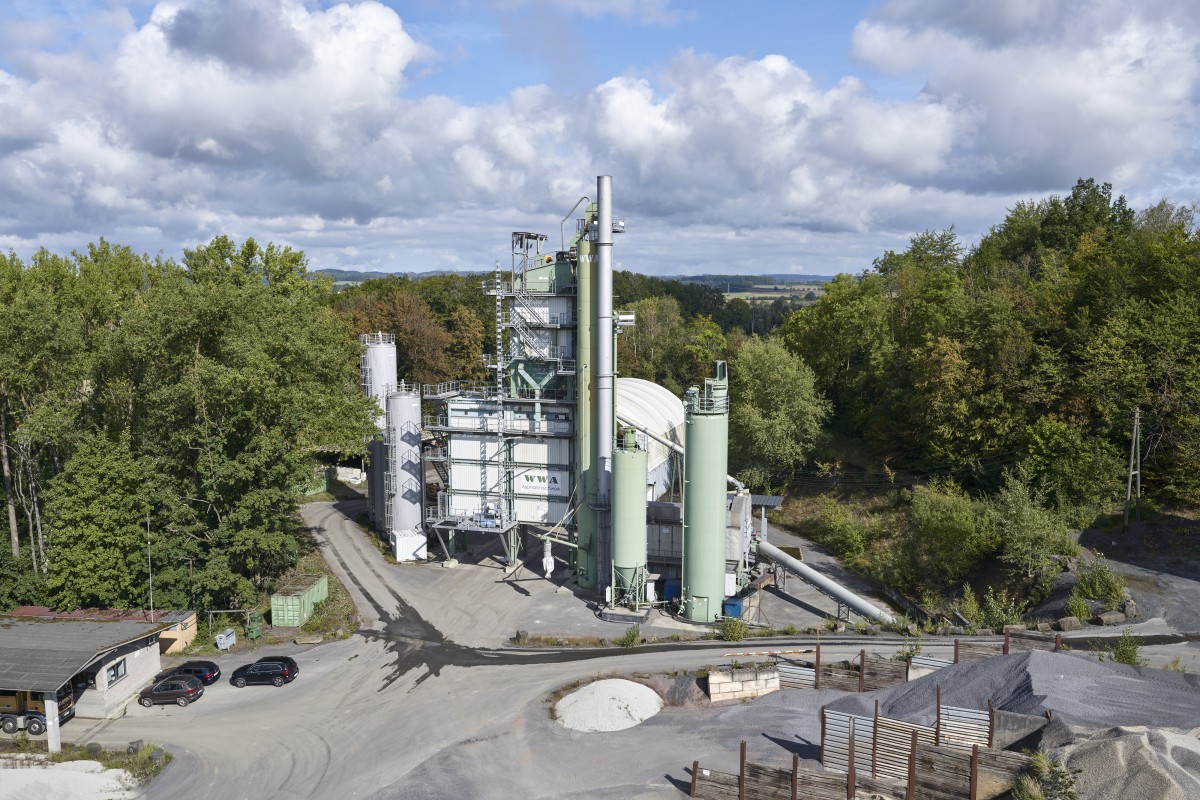
Earthmoving Machinery
24/10/2024
Benninghoven's REVOC system proven in practice
The REVOC Retrofit solution has been installed at an existin...
Road Machinery
01/10/2024
The Wirtgen Group at Paving Expo 2024
The Wirtgen Group presents groundbreaking technologies at Pa...
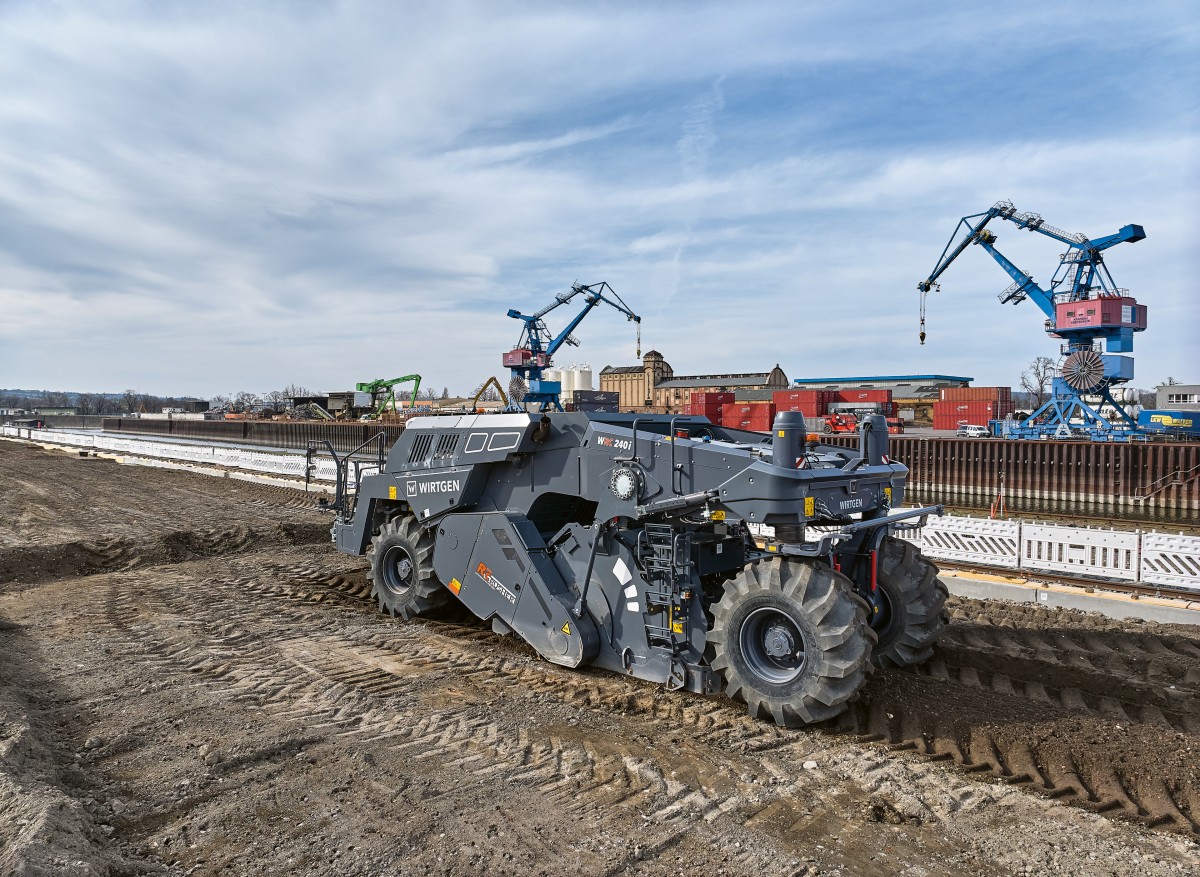
Road Machinery
26/09/2024
Rock Crusher WRC 240i speeds up recycling project for new Trailer Port in Dresden
Particularly cost-efficient in-situ processing of coarse mat...
Altri International

International
21/11/2024
Kleemann: New compact crusher used for recycling
Impact crusher MOBIREX MR 100i NEO impresses during operatio...
International
21/11/2024
SITECH partners with Royal Engineers to create poppy and demonstrate tech offering
The demostration involved creating a ground-level poppy desi...
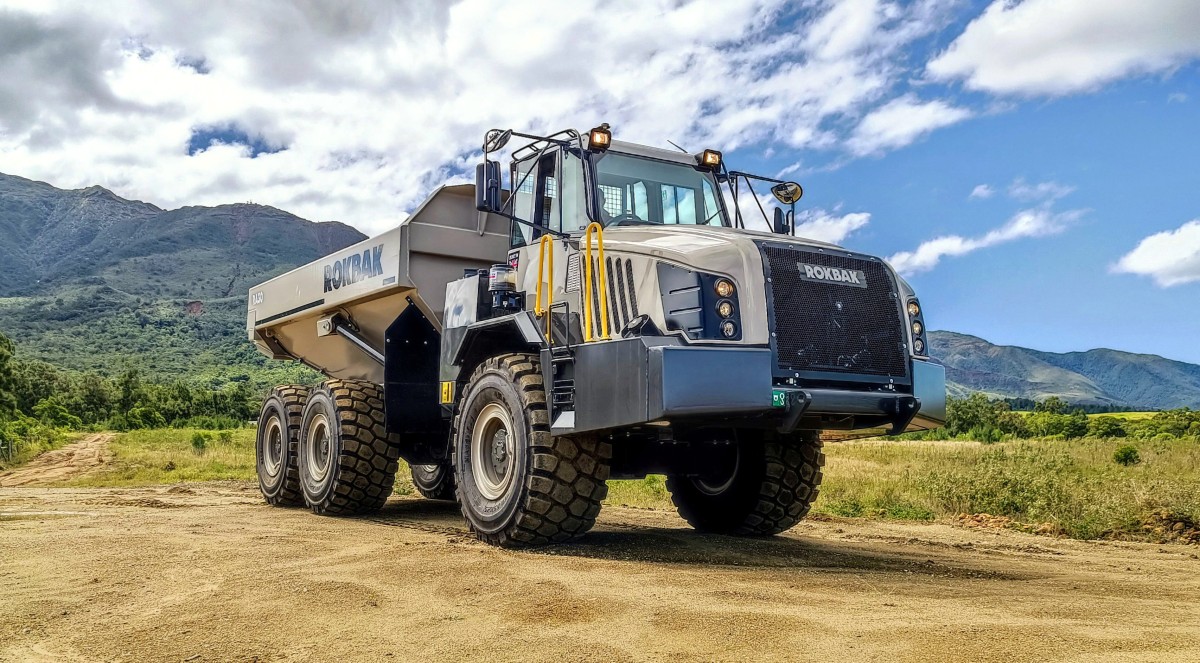
International
20/11/2024
Strong and stable RA30 trucks carry the weight at New Caledonian mine
Three Rokbak RA30 trucks are delivering exceptional durabili...
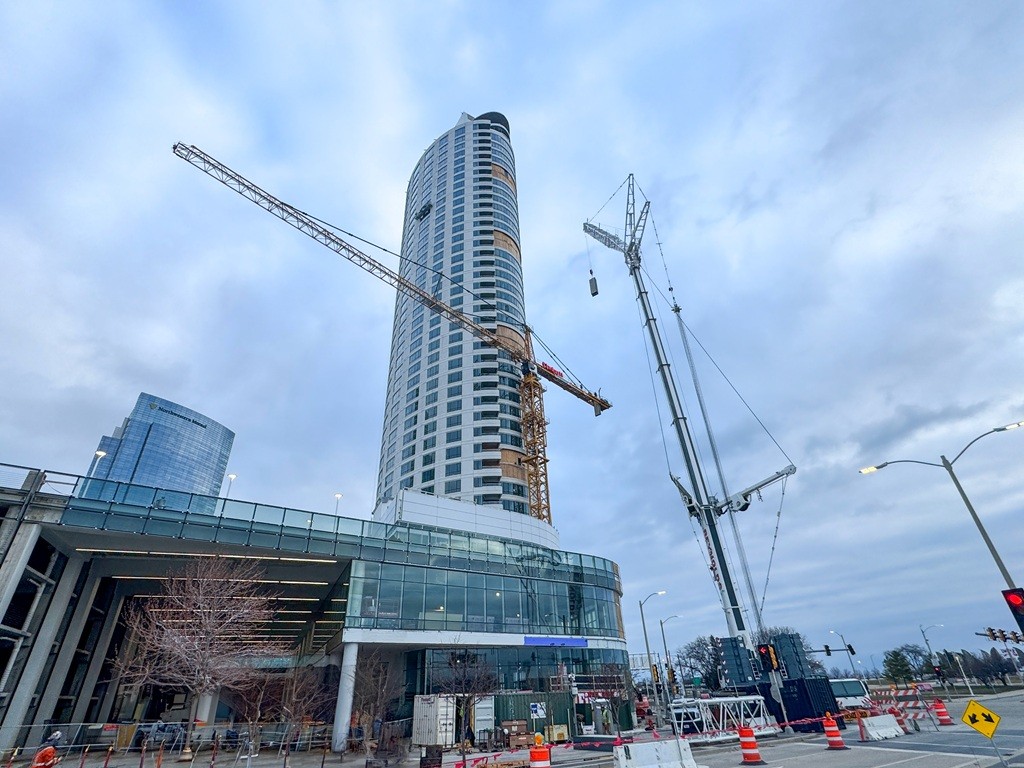
International
20/11/2024
Tadano AC 7.450-1 Performs Double Duty in Wisconsin
A cost-saving and versatile solution was already on site - a...
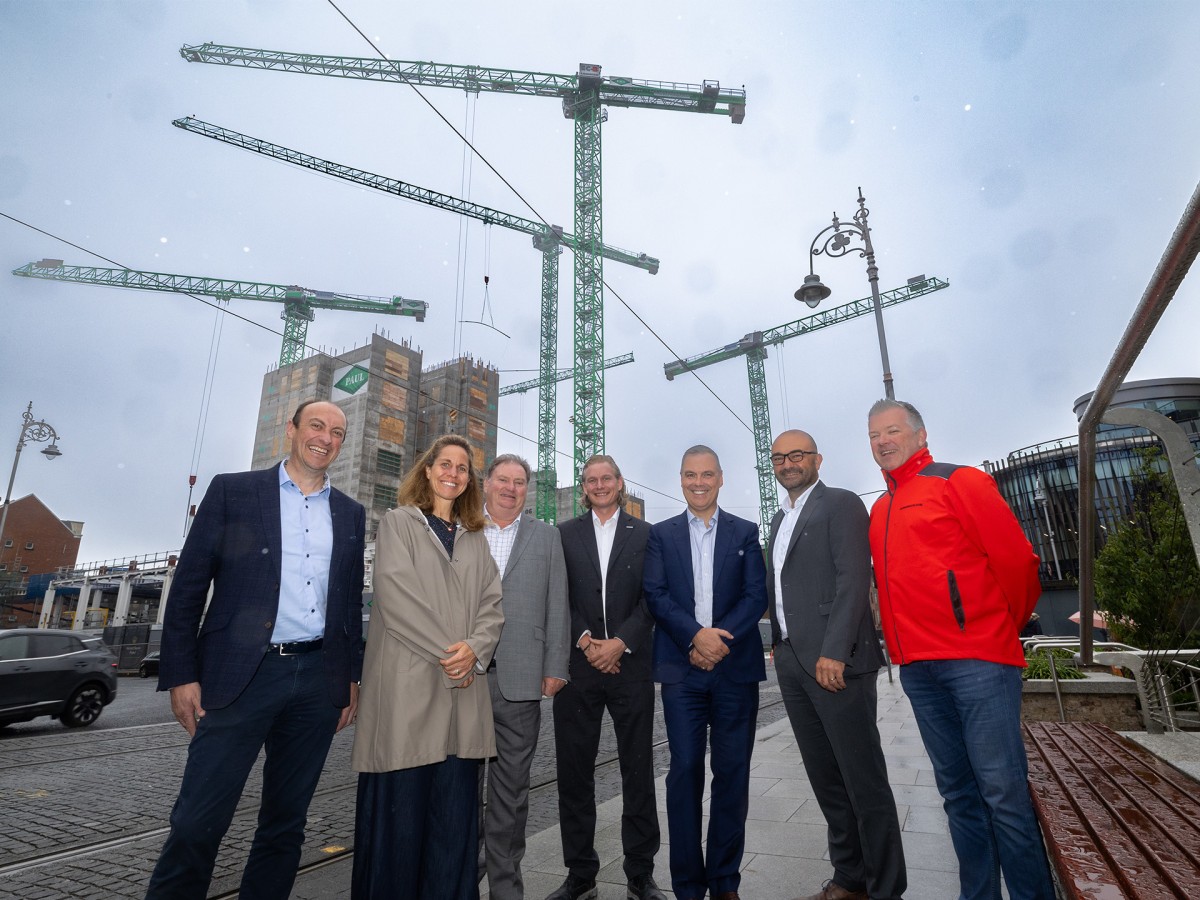
International
19/11/2024
Liebherr Tower Cranes and John Paul Construction celebrate 50 years of partnership
Irish construction company John Paul Construction is celebra...
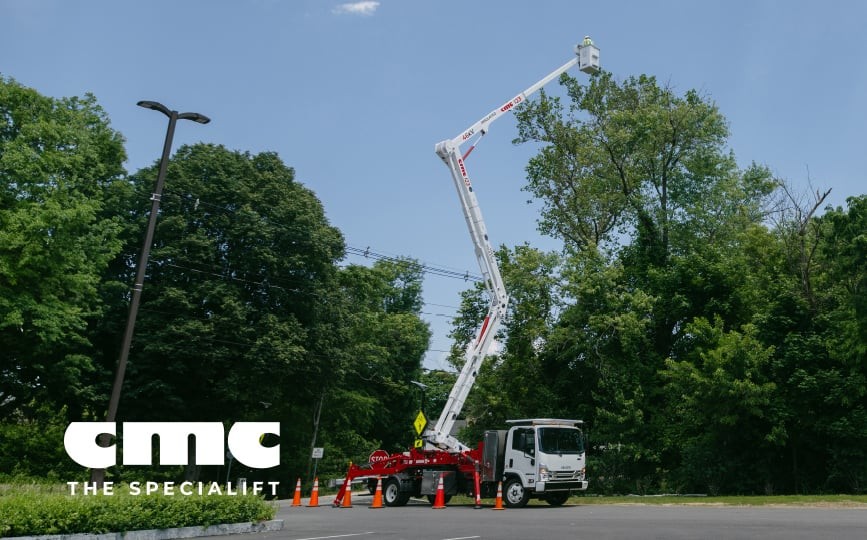
International
18/11/2024
The CMC i23 aerial platform: an example of high performances
CMC i23 is designed to maximise operational efficiency in al...











